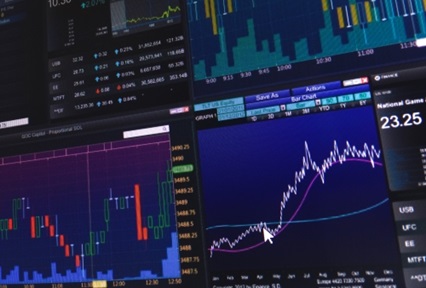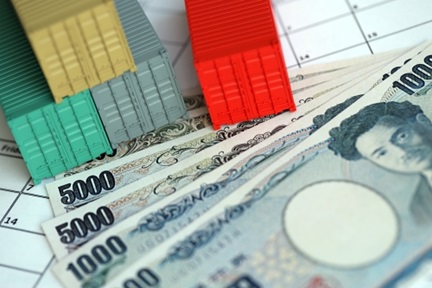Debt dynamics and debt relief in Africa
Making finance work for Africa
By Muazu Ibrahim

There has been a new wave of external borrowing by African governments to finance key infrastructure. But rising debt levels have been associated with macroeconomic instability and limited opportunities to raise financial resources. The relatively underdeveloped state of Africa’s capital markets means that raising finance from domestic resources remains a challenge. In addition, the depth of the banking sector – measured by domestic credit to the private sector extended by banks as a percentage of the continent’s GDP – is small, weighing about 28% of Africa’s GDP as at 2020, according to World Development Indicators of the World Bank. Local bond markets could provide an important source of finance, but in Africa that too is underdeveloped. That leaves African governments dependent on external borrowings and grants. Yet, only a small number of Africa countries have access to international capital markets. Evidence from Bond Radar suggests that, only 18 out of the 54 African countries have been able to collectively mobilise US$152bn between 2004 and 2021 through the issuance of sovereign bonds in the international capital markets.
While debts present additional development finance to countries, large and unbridled debt levels can inhibit economic growth and development by crowding out physical capital (those tangible human made equipment used in producing goods) particularly in developing economies. This is because, developing economies already lack adequate physical capital and as governments borrow large amounts to finance their spending, less is available for the private sector to borrow for productive investments. However, a growing debate in the debt–growth relationship argues that the extent to which higher debt levels negatively affects economic growth depends on the structural domestic conditions of an economy. That includes the quality of institutions. Research shows that debt does not inhibit growth when countries have strong institutions. Saddled with relatively weak institutions for many African states the link between debt–economic growth becomes increasingly relevant in global economy that is still reeling with the effects of the COVID pandemic.
To assist developing countries struggling to service rising external debts the International Monetary Fund (IMF) and the World Bank introduced a Debt Sustainability Framework (DSF) in 2005. It helps guide developing countries mobilise finance for development while reducing the chances of an excessive build-up of debt in the future. DSF guides the borrowing decisions of countries consistent with their financing needs and prospective repayment ability. Under the DSF, debt sustainability analysis (DSA) must be conducted regularly. It consists of: (i) an analysis of a country’s projected debt burden over the next 10 years, and its vulnerability to economic and policy shocks, based on baseline and stress test scenarios; (ii) an assessment of the risk of external and overall public debt distress, based on indicative debt burden thresholds and benchmark, respectively, that depend on the country’s macroeconomic framework and other country-specific information. To flag countries with significant public domestic debt, the framework also provides a signal for the overall risk of debt distress based on the present value of debt. To help borrowers and lenders understand the overall risk of debt distress DSF has set three thresholds – the first is a relatively safe debt-to-GDP ratio - at 35%; the second is a relatively risky debt–to–GDP ratio –at 55%; and the third is the riskiest debt-to-GDP ratio – set at 70%.
What has been the debt situation in Africa given these thresholds? An analysis of the debt situation in 52 African countries suggests that between 2010 and 2020 the number of countries with debt–to–GDP ratios below 55% of GDP steadily decreased while those above that threshold rose – a clear indication that African countries have increasingly taken on more debt. As shown in Figure 1, the number of African countries with debt–to–GDP ratios above 55% more than quadrupled from 3 in 2010 to 14 in 2019 before marginally reducing to 10 in 2020. Similarly, the number of countries with debts–to–GDP ratios exceeding 70% also rapidly increased from 5 to 14 between 2010 and 2019 before increasing again to 20 in 2020. The year 2020 marked rapid increases in debts occasioned by the need to support spending to control the emergence of COVID–19 pandemic. As shown in Figure 1, while the number of countries in each of the debt thresholds reduced, several African countries took on additional debts exceeding 70% of their GDP particularly in the last few years spanning 2018 through to 2021.
 The rising level of debt in Africa reflects an increased trend towards easy borrowing as markets remain benign thanks largely to lower yields expected from Europe and the US. The number of African countries breaching the IMF debt–to–GDP threshold of 55% rose from 28 in 2019 to 30 in 2020. Similarly, the number of countries breaching the African Union Commission (AUC) debt–to–GDP threshold of 70% significantly rose from 14 to 20. (Figure 2).
The rising level of debt in Africa reflects an increased trend towards easy borrowing as markets remain benign thanks largely to lower yields expected from Europe and the US. The number of African countries breaching the IMF debt–to–GDP threshold of 55% rose from 28 in 2019 to 30 in 2020. Similarly, the number of countries breaching the African Union Commission (AUC) debt–to–GDP threshold of 70% significantly rose from 14 to 20. (Figure 2).

 Should financial markets tighten, however, access to finance for African countries could become costlier and thus increase debt service costs. A historical analysis of debt service–to–exports ratio for African countries shows an increase in external debt service from 6.3% in 2015 to 8.7% in 2019 (Figure 4). Indeed, the rising debt service is the result of increases in commercial external debt, since traditional concessional debts and non–tax revenues (particularly grants) have decreased.
Should financial markets tighten, however, access to finance for African countries could become costlier and thus increase debt service costs. A historical analysis of debt service–to–exports ratio for African countries shows an increase in external debt service from 6.3% in 2015 to 8.7% in 2019 (Figure 4). Indeed, the rising debt service is the result of increases in commercial external debt, since traditional concessional debts and non–tax revenues (particularly grants) have decreased.
While debt financing has increased in Africa, raising the risk of default, there are marked differences at the country levels. For instance, the debt service–to–export ratio for five countries (Egypt, Kenya, Rwanda, Nigeria, and South Africa) reveals that, debt service only marginally reduced in two countries (Rwanda and South Africa) between 2015 and 2019. In the case of Kenya, debt service–to–exports ratio increased by almost five–folds indicating that borrowings were rising at a faster pace than exports (Figure 4). Kenya’s gross public debt increased from 49% to 69% of GDP over the five year period– between 2015 and 2020, resulting in high deficits, and fuelled largely by spending on infrastructure. The stimulus package and healthcare spend in response the COVID–19 pandemic was an added public expenditure in 2020 that only increased the debt burden further. An analysis of the 2020/2021 Kenya’s budget shows that out of the US$15bn total projected revenue that was expected to be collected by the government, more than half (US$8.5bn) would have to be used to merely service country’s ballooning debt.[1] Moreover, a slower pace of export growth would constrain the fiscal space for the state to manage debt. Given the falling revenues and costly debt service financing, a key challenge for African countries is the need to invest in infrastructure that eases the supply–side constraints while increasing value added growth in the manufacturing sectors, which promises to increase growth of exports.
 Are debt levels sustainable?
Are debt levels sustainable?
Global debt levels show an upward trend. Even developing Asian countries have increased their borrowings. An analysis of government debt in the 10 Asian countries (Brunei, Darussalam, Cambodia, Indonesia, Lao PDR, Malaysia, Myanmar, Philippines, Singapore, Thailand and Vietnam) reveals that average debt–to–GDP increased from 46.93% in 2019 to 55.11% in 2020 with Singapore as the only country having government gross debts exceeding 100% in 2020.[2] However, external debt-to-GDP rose from 85.98% to 98.20% between the same period with external debt of Singapore jumping from 421.98% to 491.82% between 2019 and 2020. On face value Singapore’s debt stock looks unsustainable. But on closer inspection it is not. Singapore is a global financial hub and its external debts are largely comprises of deposits held by the country’s financial institutions. Singapore’s assets exceed its liabilities making the country a net creditor with high ability to service its debts. In addition, for most of Asia, debt levels remain largely sustainable given the low interest-growth differentials relative to Africa.

As shown in Figure 5, interest-growth rate differentials in Africa remain exceedingly and consistently higher compared to the Asian region. The differential measures the difference between the interest rate a country pays to service its debts and the rate at which the country grows is a crucial indicator used is one of the critical indicators used to determine debt sustainability of a country. A lower differential makes it possible for governments to reduce their cost of debt servicing debts and overall debt stock. The interest-growth rate differential remained in the single digits in Asia before substantially increasing from 3.2% in 2019 to 10.9% in 2020.[3] Indeed, the sharp increase was occasioned partly by the negative growth rate recorded in 2020, as a result of the COVID-19 pandemic. With higher prospects of recovery and economic activities getting back to pre-COVID levels, the interest rate differential is expected to fall. The persistently higher differentials n Africa increases debts stock which puts countries under higher debt default and distress.
Debt stock and debt growth rate in Africa: trends and determinants
Most analysis on debt underscores the importance of a country’s debt level as a key indicator of debt sustainability, where certain threshold levels are used to indicate whether a country’s debt is sustainable or not. However, the speed of growth of debt is also an important indicator that African countries can use to examine if their debt path is sustainable. During the period before 2008, several African countries benefitted from the Heavily Indebted Poor Countries (HIPC) debt forgiveness programme.[4] The HIPC initiative was launched by the World Bank and IMF in 1996 to respond to the debt burden of the world’s poorest countries by providing them with debt reliefs. In Africa, the HIPC initiative provided debt relief to 31 countries totaling US$76bn and led to reduction of debt stock by almost 90%.[5]
The downward trajectory on debt moderated in 2011, after which debt levels took an upward trend. Between 2010 and 2014, Africa’s debt contracted. However, after 2015, growth of debt picked up, averaging 3.06% between 2016 and 2018. Interestingly, Africa’s debt grew by 8.99% between 2019 and 2020 with many countries exceeding the debt thresholds in 2020[6] (see Figure 3 and 6). The component of external debt also increased by 9.3% between 2019 and 2020 (Figure 6). The jump in recent debts is largely attributed to the COVID-19 pandemic, which disrupted value chains and revenue streams of countries. Hitherto, Africa’s debt increments were caused by fall in commodity and oil prices leading to a drop in revenues especially for the commodity-dependent countries. At the same time, access to international credit markets eased and combined with more favourable economic conditions, African countries took on more commercial debts.

What then empirically drives the current debt stock and growth rate trajectory in Africa? An analysis of the drivers of the debts over the past decade reveals that, the interest payments spur both the debt levels and growth rate while an increase in countries’ fiscal deficit (a shortfall in a country’s income relative to its expenditure) also raises the debt levels and growth rate. Anecdotal estimates suggests that a rise in fiscal deficit by US$1m raises Africa’s debt stock by 8.71% and at the same time, increases the continent’s debt growth by 0.001%. Interestingly, a US$1m rise in current account deficits (a shortfall in a country’s receipt of income from the sale of selling goods and services to other countries and the money spent to buy goods and pay for services rendered to it) also increase Africa’s debt growth by 0.001% while increasing debt stock by only 5.60%. Therefore, the effect of fiscal deficit on debt stock is higher, compared to current account deficit even though both exert the same impact on debt growth.
Towards unsustainable debts
It has been less than two decades since African countries came out of the HIPC initiative. The debt environment has since changed. First, in the pre–HIPC environment, most of the borrowing was concessional with bilateral and multilateral doing most of the lending. Now most of Africa’s debt is commercial. Second, in the current environment, African countries have greater access to international capital markets than ever before. Many have successfully issued several sovereign bonds. Between 2004 and 2021, African countries made 154 bond issues representing 21% of all bonds issued by emerging markets.[7]
Nevertheless, one stark similarity remains between the pre–HIPC debt environment and the current debt environment; borrowing is mostly from external debt. One reason for this is that African countries have underdeveloped local domestic financial markets, which makes it easier for governments to mobilise external borrowing. Another reason is that Africa’s investment needs are far greater than what domestic savings (which currently averages 20% of GDP) can finance. In addition, foreign aid inflows and other concessional loans have declined overtime further reducing the available financial resources and turning countries towards the uptake of external debts. It is, however, imperative that borrowing is sustainable, and a return to the HIPC situation is entirely avoided.
However, with the emergence of the COVID–19 pandemic, both the debt growth and debt stock of African countries have substantially elevated to new heights as governments have sought for additional financial resources – largely through borrowings – to finance key expenditures to contain the spread and effects of the virus. The need to immediately fund the acquisition of vaccines, improve healthcare systems and to ensure speedy recovery have resulted in higher demand for liquidity. According to the United Nations Economic Commission for Africa (UNECA) Africa needs additional US$100bn to fight COVID1-19.[8] With the outbreak of the new COVID-19 variant – Omicron, the financing requirement is only expected to make the bad situation worse and increase the pressure on African governments to borrow further. The IMF has so far committed over US$26bn to Africa through the Catastrophe Containment and Relief Trust (CCRT) to provide additional liquidity to countries following the outbreak of the pandemic. The European Commission has also committed over US$110m in humanitarian assistance to support the rollout of vaccination programmes in Africa. The G20 has also instituted the Debt Service Suspension Initiative (DSSI) aimed at providing debt support to countries including those in Africa by deferring debt service payments to allow the resources be used to support economic recovery. The debt suspension programme, which was to end on 31 December, 2020, was extended by another year. As shown in Table 1, 32 out of the 54 African countries participated in the DSSI. Collectively they made a saving of almost US$ 9.2bn between January 2021 and December 2021. While two countries (Congo Republic and Mozambique) are already in debt distress, 12 countries including Kenya are at high risk of debt distress.

Participation in the DSSI was initially stalled by disagreements regarding the classification of debt and concerns of being downgraded by credit rating agencies. Some, like Ghana, were reluctant to participate for fear of triggering a rating downgrade (which could eventually make it difficult to borrow in the future). If the country had participated, it would have been making a potential saving of US$ 354.6m representing a 0.5% of its GDP. Similarly, Rwanda would have also made saving of US$26.5m (0.3% of GDP) had it also participated in the DSSI.
Apart from countries’ concerns of being downgraded, the DSSI does not take commercial debts into consideration, which now accounts for a third of the Africa’s total debt exposure. The continent’s debt service obligations for 2020 alone have been estimated at some US$48bn, almost five times higher than the combined potential saving of the DSSI participating countries in Africa. Access to additional liquidity is therefore vital for the speedy recovery of Africa. While the IMF’s Special Drawing Rights (SDR) also constitute a crucial source of concessional financing for Africa, the current quota shares suggest that the continent would only receive US$33bn out of the US$650bn. This implies that even though the debt relief are essential in providing additional financial resources to the countries, they only tackle a small portion of Africa’s liquidity challenges.
While the DSSI helps countries to address immediate liquidity needs and free–up scarce money that they can use to alleviate both the human and economic effects of the pandemic, the initiative is far from being a panacea for potential debt sustainability problems in the continent. As concern for African debts distress grows access to international capital markets has reduced. Although interest rate remains low financing conditions have tightened. Hence it is critical for Africa to mobilise domestic resource to meet its financing needs. That would mean strengthening domestic capital markets with increased reliance on local currency denominated loans.
References
[1] See https://www.businessdailyafrica.com/bd/news/sgr-services-at-risk-over-sh38bn-china-firm-debt-2292334
[2] Only Germany has a debt-to-GDP of 68.9% in 2020.
[3] The computation is based on eight out the 10 Asian economies. Cambodia and Lao are not included based on data unavailability.
[4] For a discussion on this, see Atta-Mensah, J., and Ibrahim, M., (2020). Explaining Africa’s debt: The Journey so far and the Arithmetic of the Policymaker, Theoretical Economics Letters, 10(2), 409-441.
[5] See https://www.imf.org/en/News/Articles/2015/09/28/04/53/socar022508a
[6] The calculation is done based on data from 52 African countries. It excludes Somalia and Libya because of data unavailability. Data on external debt does not include Equatorial Guinea, Libya and South Sudan.
[7] See https://www.bondradar.com/
[8] Available here: https://www.uneca.org/sites/default/files/COVID-19/african_ministers_of_finance_-_covid-19_response.pdf


.tmb-listing.jpg?Culture=en&sfvrsn=8636ce67_1)





